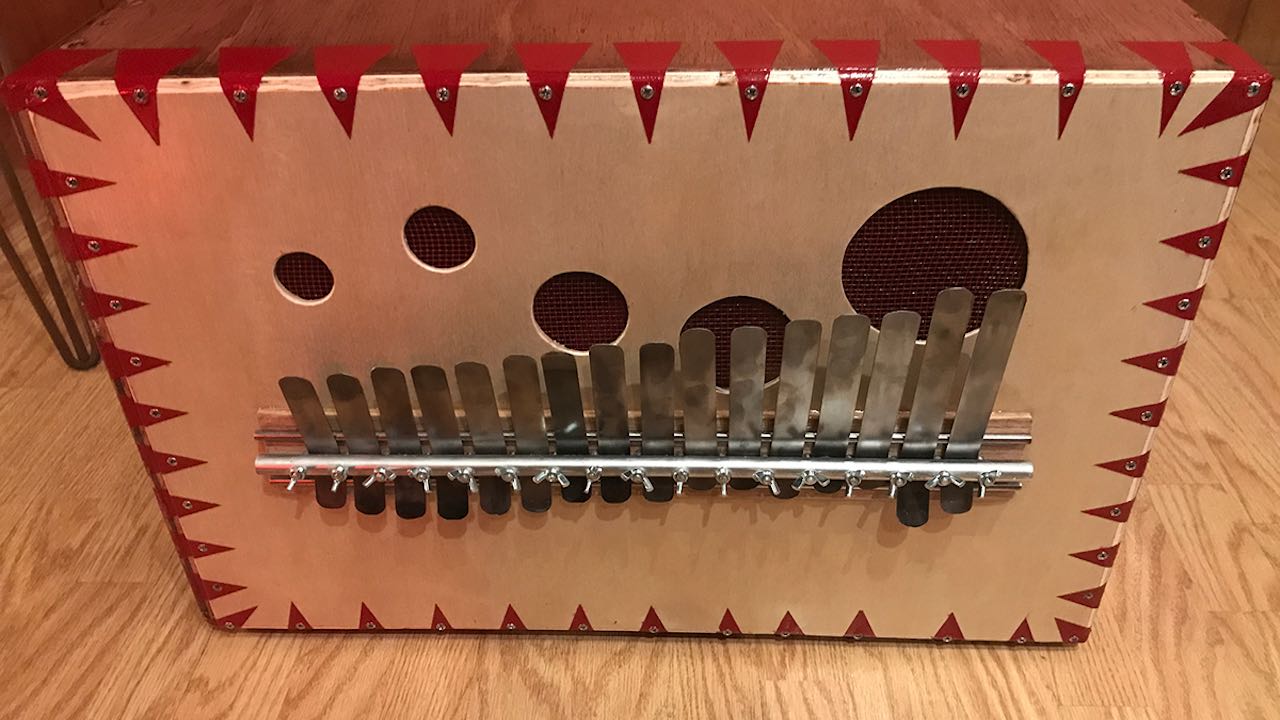Bass marimbula/cajón
A sit-upon box that can be played as a traditional cajón with built-in snare, or as a marimbula, which is something like a bass thumb piano on steroids.
 I have been exploring metallophones because they resonate with me - metaphorically and physically. The resonance of a xylophone or gong sounds beautiful and actually *feels* good to our bodies in a way that an electronic instrument does not. Drums can do this - metallophones can do it with much more chromatic range.
I have been exploring metallophones because they resonate with me - metaphorically and physically. The resonance of a xylophone or gong sounds beautiful and actually *feels* good to our bodies in a way that an electronic instrument does not. Drums can do this - metallophones can do it with much more chromatic range.Metallophones are easy to play, easy to build, and - like all good instruments - difficult to build *well*.
So how did *this* thing happen?
I branched from xylophones into cajóns just to try building something different. The first two were easier to make, aesthetically appealing to me, and instantly usable as furniture!
Then I veered wildly to the left when I thought "What if I build a REALLY BIG KALIMBA?" No idea where that came from - I think I yearned for deep bass tones that xylophones just could not deliver.
I mashed-up my learnings in woodworking and plywood resonance from cajón-building and experimented with different tongue materials - first with thin steel and aluminum stock (too rigid to vibrate) and later with thinner stock - until I settled on tongues cut from recycled steel 3/4"-wide shipping strap.
It took a while to figure out how to construct a bridge that could be applied firmly to the cajón face, would be rigid enough to prolong vibration of the tongues, and would look good - because aesthetics.
Once I had the method down, the cajón box took about 12-15 hours, the bridge and tongue another 10-12 hours, and then another 2-3 hours of tuning, futzing and finishing.
